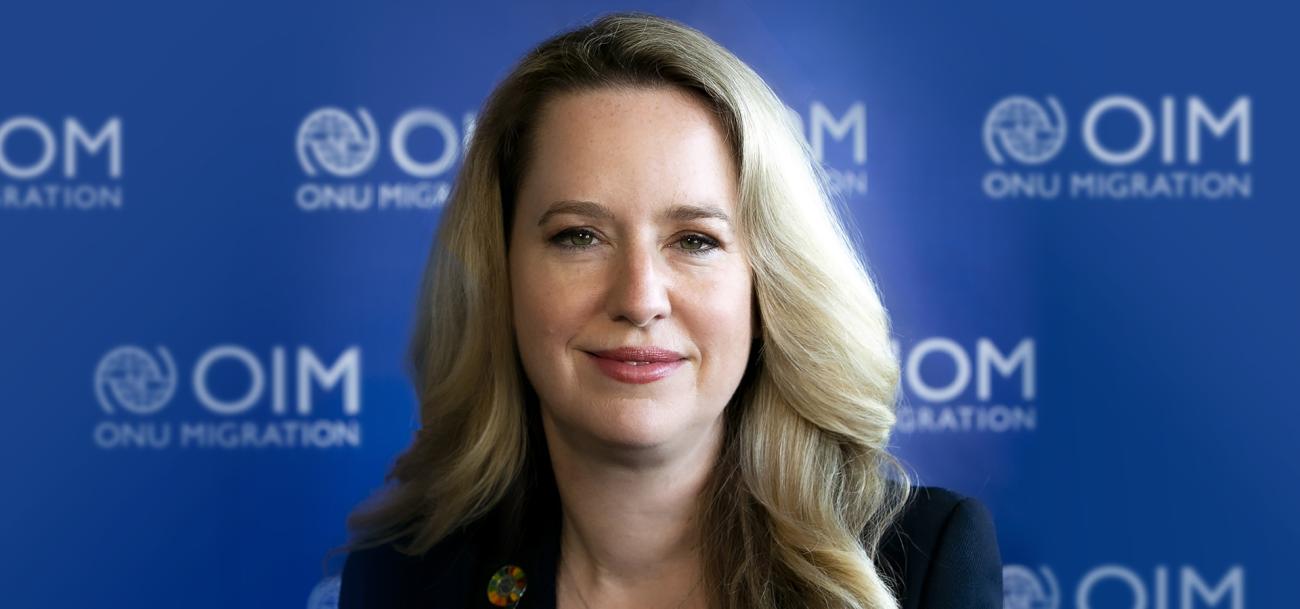Typhoon Rai as wake-up call

Op-ed by Amy Pope, deputy director-general of IOM
Typhon Rai, locally known as Odette, smashed the Philippines three months ago, sweeping through 11 of the country’s 17 regions, destroying or damaging over 2 million houses, far eclipsing that of Typhoon Haiyan in 2013. Approximately 32,200 people remain displaced mostly in evacuation centers.
The road to a full recovery will be long and full of challenges. Yet returning from my field visit to Siargao, Philippines, I was inspired by the “Bayanihan” spirit. From the community where people are assisting their fellow neighbors to rebuild their houses, to the intervention led by Local Government Units, Mayors, Governors and National level counterparts, the desire to recover and help one another in times of a crisis is palpable and something that will stay with me long after my visit.
This typhoon, however, must serve as a wake-up call to the international community. The Global Climate Risk Index 2020 ranks the Philippines as the second most vulnerable country in the world affected by climate change despite being one of the smallest contributors to CO2 emissions. More than 60 percent of the Filipino population resides in coastal areas and will be forced to move with one-meter sea rise brought about by global warming—that equates to 60 million people having to move by the end of this century. As President Duterte warned in his address during the 76th United Nations (UN) General Assembly, “the risks and burden of a warming climate are simply not the same for everyone. ... But here we are now at a critical tipping point, where failure to act leads to cataclysmic consequences for the whole of humankind.”
Knowing that climate impact is inevitable and recognizing that failure to act will be cataclysmic, there are three things we must do now to prepare for and mitigate the impacts of climate change on human life.
First, we have seen time and again that human mobility is inextricably linked to climate change. Nowhere is that more evident than in the Philippines. Migration is one of the coping mechanisms of affected Filipinos facing climate crisis, either as a choice or a force of circumstance. We must acknowledge that the protection of the most vulnerable should be at the forefront of our climate action, and collectively build migration into our climate change mitigation measures. National and regional policies must include more migration adaptation measures, and resources are needed to address and prevent displacements while increasing people’s resilience, especially in the most vulnerable countries.
Second, it is imperative to ensure that adaptive migration as a solution is safe, informed, and desired. For instance, IOM is working closely with the Philippines Government and communities on planned relocation and transitional sites in typhoon affected areas. Through the generous support from donors such as USAID, Australia, Japan, Canada, UN Central Emergency Fund and Germany, IOM is providing critical shelter assistance, hygiene and sanitation, Camp Coordination and Camp Management (CCCM), Health and COVID prevention and Mental Health and Psychosocial Services. While essential, these actions are primarily reactive. Our actions in the field today can and should be a pathway towards managing climate vulnerabilities. They must be done proactively and strategically in a contextually grounded manner and with strong community engagement.
Finally, we need to harness the power of the estimated 10 million Filipinos living abroad to strengthen climate resilience locally. The Philippines is a country that has for decades made the most out of migration. Since the 1980s, Overseas Filipino Workers (OFW) have been hailed as bagong bayani (modern-day heroes). In 2019, remittances from OFWs reached a record high of USD 33.9 billion, equivalent to nearly 10 percent of the country’s gross domestic product (GDP). With one of the largest diasporas in the world, we need to leverage this support and direct these financial contributions to build back better using the lessons learned from past climate emergencies – such as building four-corner roofs over home in typhoon-prone areas to protect these rebuilt communities from future devastation.
As the cost of the climate crisis is reaching irreversible heights, I depart the Philippines reflecting on the devastating impacts of Typhoon Rai and the future of the communities in the Philippines. While the “Bayanihan” spirit gives me hope, we now need bold collective action to build the resilience of communities at risk, to protect the most vulnerable, and to ensure that migration remains a choice rather than a necessity. [Ends]


